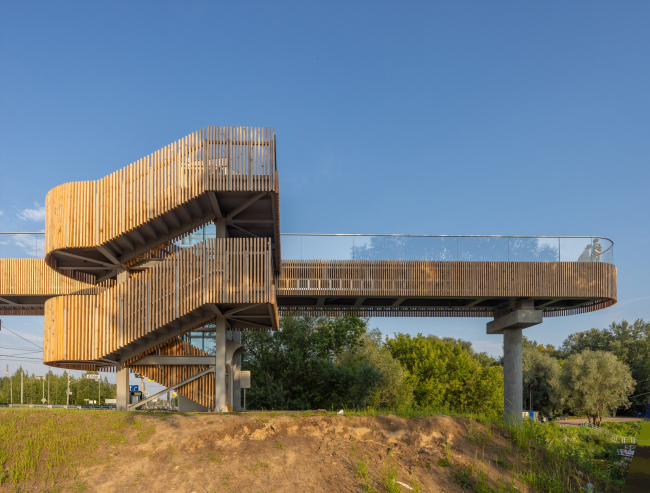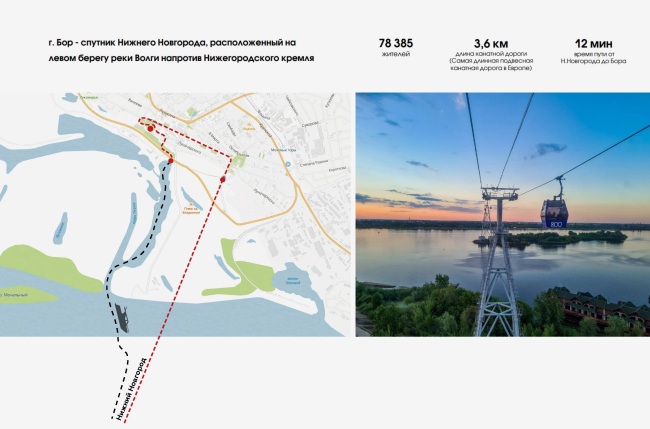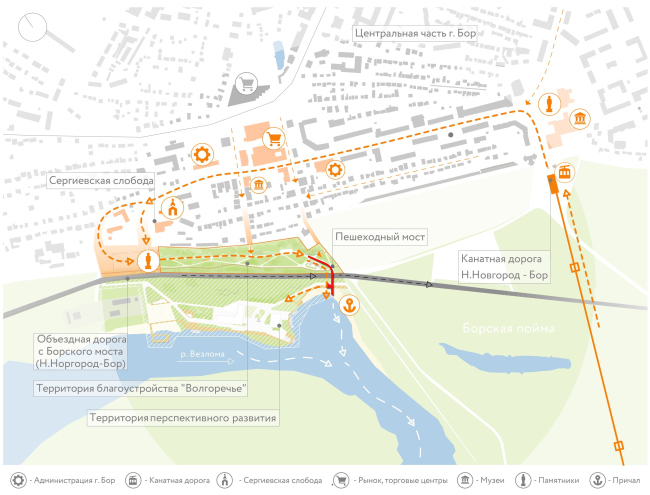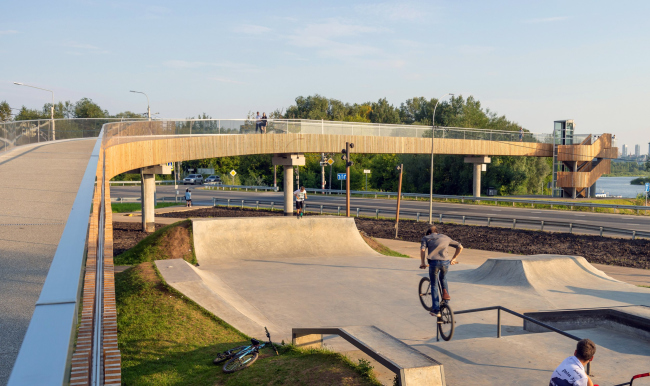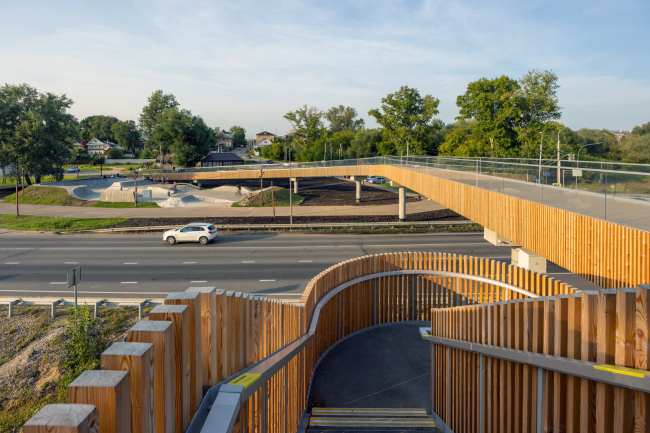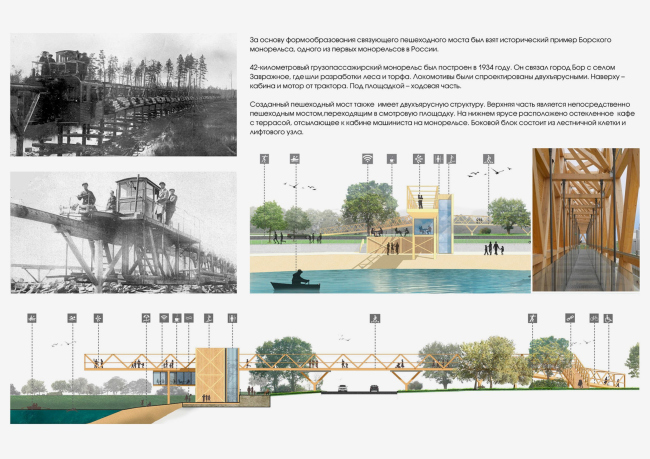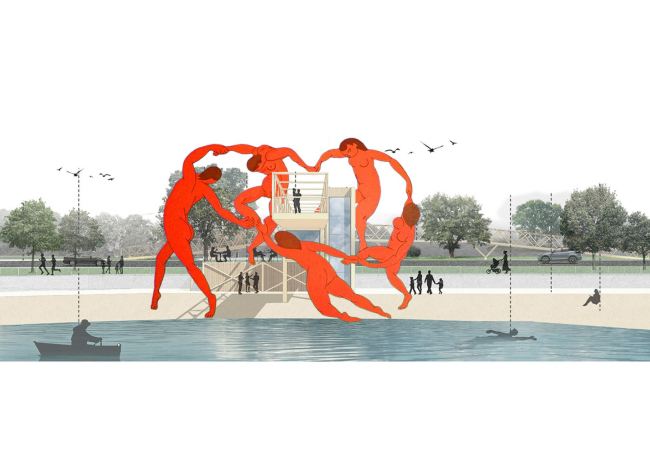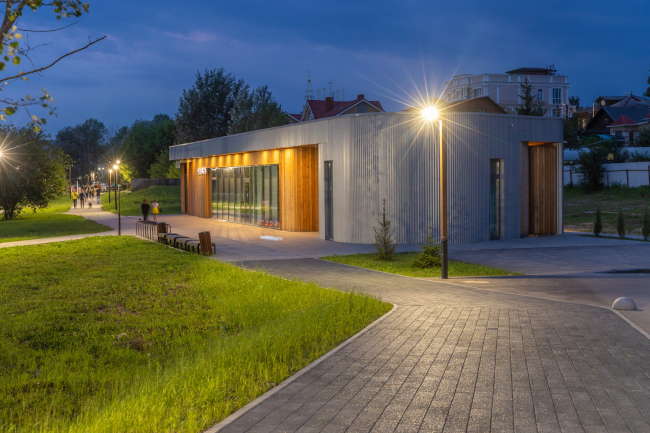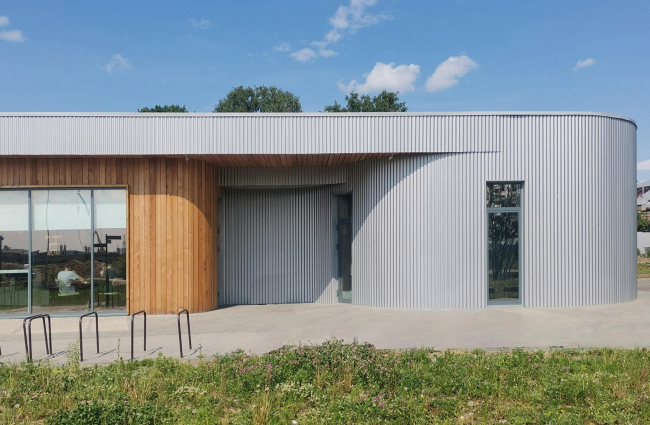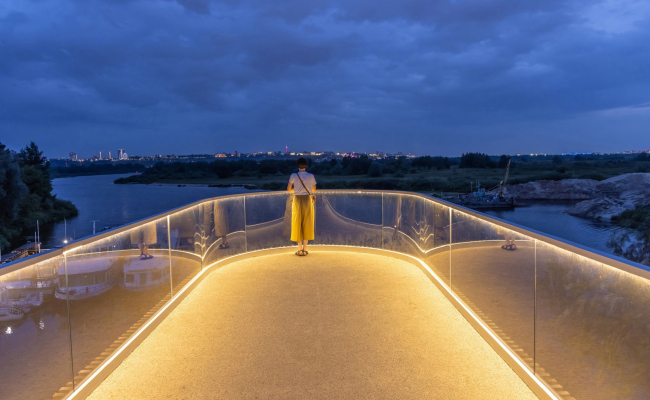|
Published on Archi.ru (https://archi.ru) |
|
| 19.10.2023 | |
|
For Mental Reboot |
|
|
Marina Ignatushko |
|
| Studio: | |
| Gorshunov Architecture Bureau GORA | |
|
At the architectural competition held in 2023 in Novosibirsk, the project by GORA Architects – a pedestrian bridge leading to the town of Bor – was awarded the “Golden Capital” prize. In this country, more than a hundred pedestrian bridges are constructed each year. What makes the Bor bridge different? The project’s author, architect Stas Gorshunov, explains: the pedestrian bridge is an extension of the route from the city center to the water – to the Vezloma River, which flows into the Volga here. The pedestrian bridge in the Bor Volga ValleyCopyright: Photo © Alexander Ivasenko / provided by GORAThe pedestrian bridge in the Bor Volga ValleyCopyright: Photo © Alexander Ivasenko / provided by GORABor is situated on the left bank of the Volga but is separated from it by flood meadows: passenger ships travel to Bor through the Vezloma channels, and a ferry was in operation for cars. The new pedestrian bridge leads to the pier, and the observation platform at its end faces Vezloma, overlooking the Bor floodplain. The route from the city to the pier is seasonal, and after the construction of a cable car and an alternative to the Bor bridge (of federal importance), reaching Nizhny Novgorod across the Volga is not a problem at all. However, the flood meadows are a traditionally beloved recreation spot for the residents of Bor. Seven years ago, this area was suddenly cut off from the city by a bypass road, which was justified by the needs of motorists, although not everyone found these justifications convincing. The pedestrian bridge in the Bor Volga Valley. Fragment of the presentationCopyright: © GORAThe pedestrian bridge in the Bor Volga ValleyCopyright: Photo © Alexander Ivasenko / provided by GORAOn the bypass road, a traffic light was installed at the zebra crossing, but then the idea of an overhead pedestrian bridge emerged. Initially, there was a proposal to create something similar to Nizhny Novgorod – a clumsy plastic pedestrian “pipeline”. However, during one of the discussions, the governor had doubts, which eventually led to the concept of a tailored project. If one considers only these facts and observes a bit more how pedestrians currently, without using the bridge, walk towards the traffic light, it is easy to assume that Gorshunov’s project is just a piece of pleasant art, and a pure simulacrum. 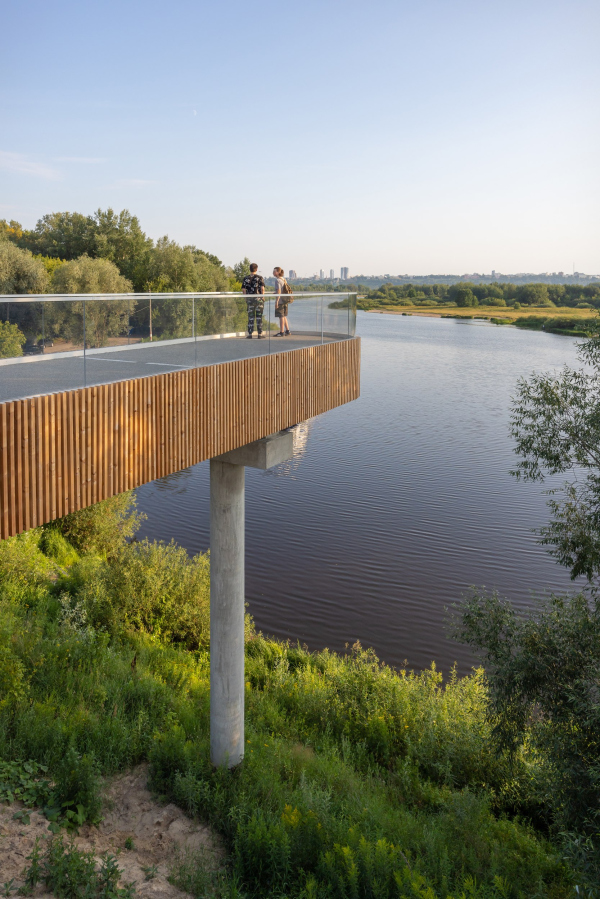 The pedestrian bridge in the Bor Volga ValleyCopyright: Photo © Alexander Ivasenko / provided by GORA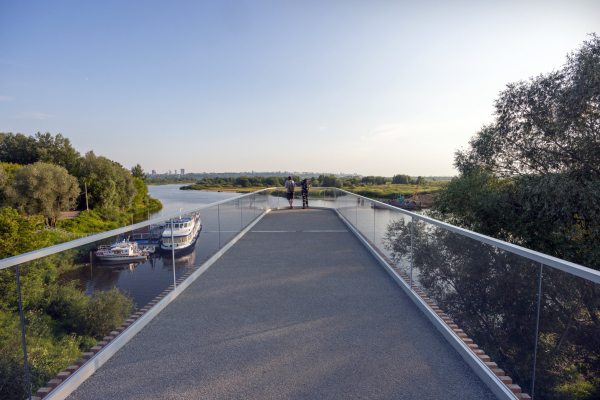 The pedestrian bridge in the Bor Volga ValleyCopyright: Photo © Alexander Ivasenko / provided by GORASuch assumptions quickly dissipate when one recalls how vehemently local communists criticized the very idea of a pedestrian bridge. In response to the criticism, a whole chain of arguments was built: the “Volga Valley” will be improved, increasing the city’s tourist attractiveness and eventually merging into a certain tourist cluster. Whether the cluster will materialize is unknown; in the coastal zone, re-enactors are already active, depicting scenes from Ancient Rome, and a wake-surf park operates on Yurasovskoye Lake in the summer. There were statements about building an oceanarium in Bor, which were met with mixed reactions and subsequently refined with the addition of “an oceanarium with a hotel and a rehabilitation center for children with cerebral palsy”. Another initiative is to open a yacht club with winter storage and a pier for boats on the banks of the Vezloma. So, currently, the pedestrian bridge is a symbol of change in the Bor Volga Valley. The pedestrian bridge in the Bor Volga ValleyCopyright: Photo © Alexander Ivasenko / provided by GORAThis symbol is indeed beautiful. The bridge itself is a new landmark for the city, modern and aesthetically flawless, following in the footsteps of the “Mossy Mountains”, the previous project that GORA Architects did in Bor. The pedestrian bridge in the Bor Volga ValleyCopyright: Photo © Alexander Ivasenko / provided by GORAThe pedestrian bridge in the Bor Volga ValleyCopyright: Photo © Alexander Ivasenko / provided by GORAThe bridge is referred to as an aluminum one; its structures are made of metal, while the finish consists of larch and glass. The glass fragments are crucial for the city, primarily known for its glass factory.  The pedestrian bridge in the Bor Volga Valley. The construction processCopyright: Photo © Stanislav Gorshunov / provided by GORA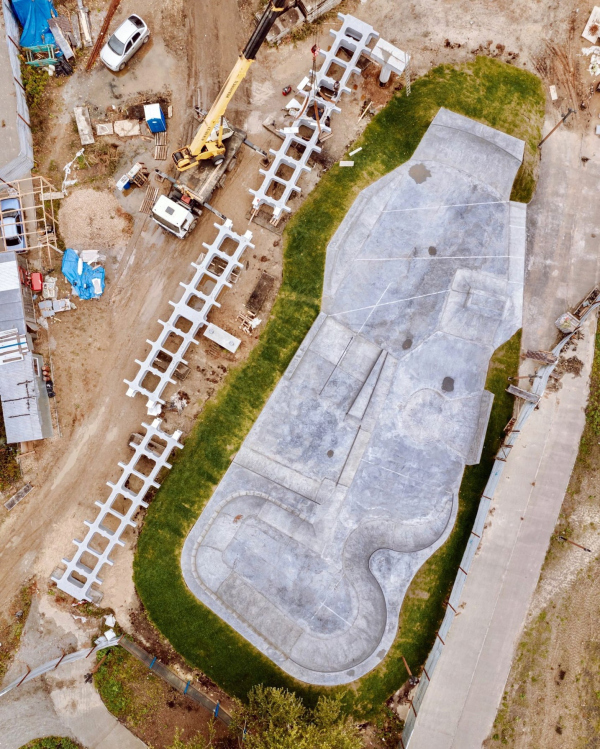 The pedestrian bridge in the Bor Volga ValleyCopyright: Photo © Stanislav Gorshunov / provided by GORAThe use of wood in the design is not accidental. The initial version of the project envisioned the construction of a wooden bridge. Local history inspired the architects as well: in the mid-1930s, the first industrial monorail road in the country was launched in Bor. The wooden viaduct traversed a terrain with significant elevation changes, transporting timber and peat to Bor. The road operated for six years until the forest area was completely exhausted. 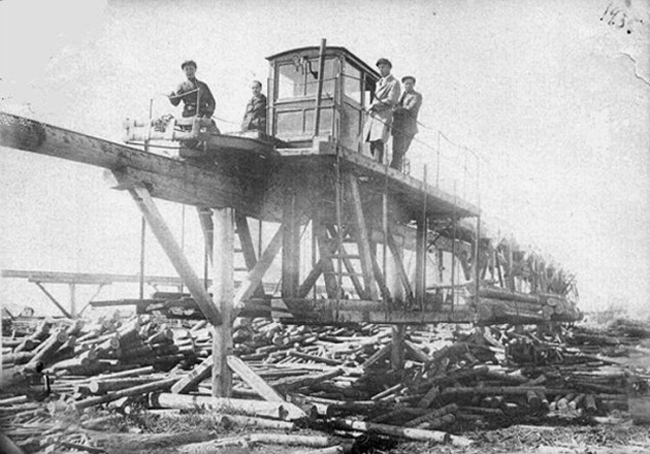 Monorail of 1935 in Borsky Volga ValleyCopyright: Archival photo: submitted by AB GORAThe project’s explanatory note says that the locomotives on the monorail road were double-decker: the top part housed the cabin and motor from a tractor, while the lower part contained the running gear. Similarly, the wooden bridge could reproduce the monorail’s image, with a cafe as an addition on the lower platform under the observation deck. The original project of the wooden bridge. The pedestrian bridge in the Bor Volga ValleyCopyright: © GORAHowever, it was not by chance that, in defense of his project during the final stage of the architectural competition “Golden Capital”, Gorshunov enriched his presentation with a slide with red figures reminiscent of Matisse’s “Dance” around the bridge. The pedestrian bridge in the Bor Volga ValleyCopyright: © GORAI thought it was a hint at high art, and that Stas decided to make a bold statement. However, it turned out to be a visualization of the bustling atmosphere around the bridge project, as various interested parties emerged. Discussions about durability, fire safety, and other security concerns had a radical impact on the project. They wanted something more than allusions to the history of logging, something about a bright future, especially since talks were already underway about “Nizhny Novgorod high-tech” – the first aluminum automobile bridge in Russia over the Linda River, not far from Bor. As a result, the wooden pedestrian bridge was redrawn into an aluminum one. 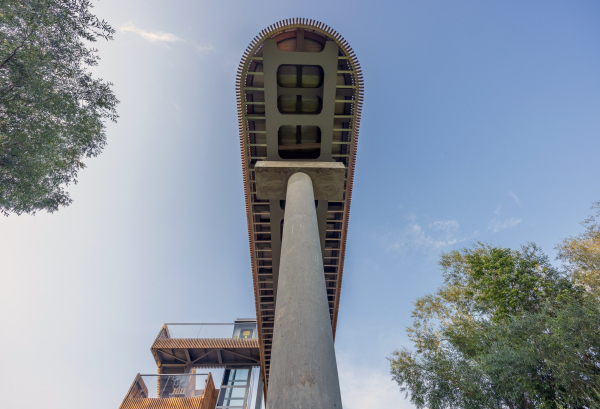 The aluminum structures are particularly visible when viewed from below the observation deck cantilever. The pedestrian bridge in the Bor Volga ValleyCopyright: Photo © Alexander Ivasenko / provided by GORA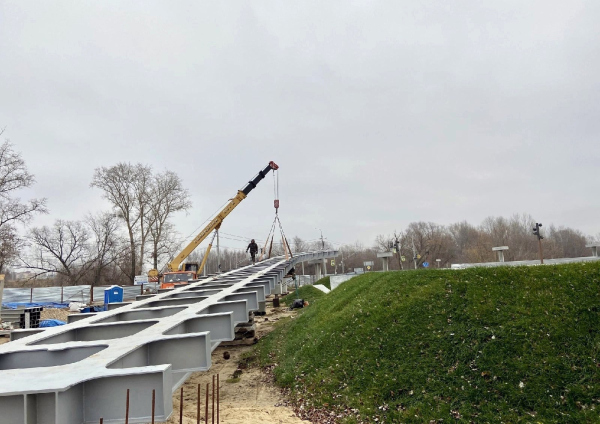 The aluminum structure was moved by crane to be installed over the road. The pedestrian bridge in the Bor Volga Valley. The construction processCopyright: Photo © Stanislav Gorshunov / provided by GORAThe use of wood in the bridge’s design extends vertically to the “Volgorechye” café – it is not suspended under the bridge but is situated at the beginning of the ascent to the bridge, next to the skate park. The entire area is landscaped according to a unified project, reaching to George the Victorious Square: pathways, small structures, and platforms. The promenade area will also extend in the other direction beyond the bridge, reaching to the cable car. The pedestrian bridge in the Bor Volga ValleyCopyright: Photo © Alexander Ivasenko / provided by GORAThe pedestrian bridge in the Bor Volga ValleyCopyright: Photo © Alexander Ivasenko / provided by GORAThe bridge received high praise not only from the “Golden Capital” judging panel in Novosibirsk but also from the residents of Nizhny Novgorod, who openly envy their satellite city. Of course, one should not expect that the lift for people with limited mobility is operational or that there is no litter or waste around. However, the quality of execution on the bridge and in its vicinity is exemplary. The pedestrian bridge in the Bor Volga ValleyCopyright: Photo © Alexander Ivasenko / provided by GORA“In its vicinity” is a very important specification here. Locals refer to Bor as a large village, and to some extent they have a point – public life here is fragmented into private interests, and common goals are rarely united. Although occasionally they do unite – such as in building the Stalin Museum (currently in construction). As for the Mukhinskoe Lake – the main myth and foundation of the city – it has been improved almost to the point of complete loss of all living things. The metal structure – a fragment of the 1896 pavilion, part of which is preserved on the Nizhny Novgorod Spit – was also attached to the case, despite knowing the history of this iron thing. Yurasovskoye Lake (where they opened a beach and the wake-surf park) is now surrounded by roads, and this summer Rospotrebnadzor declared it unsuitable for swimming. The historical wooden building of the “Mossy Mountains” station was restored beyond recognition, and turned into a beer shop. In Volgorechye, opposite the new café – across the road – where the ruins of some small production still stand, a giant windowless and seemingly doorless structure has emerged. No one has a clue who even issued permission for building such a thing here. However, there are also questions about the improvement of Volgorechye: who will take responsibility for the withered saplings passed off as greenery? As the significance of the bridge for the city of Bor is challenging to measure at the moment, and not everyone believes in signs, I suggest evaluating it as an art object. It has everything: precision of proportions and a divergence of lines. Warmth and aloofness. Traditional material and innovation. It is appropriate, comfortable, and, moreover, self-sufficient. Original-looking, yet at the same time devoid of unnecessary ornamentation. In addition to the ability to move up and down, along, and even across, it accentuates the feeling of suspension and hovering. And if this bridge symbolizes anything, then it is an attempt to discern the perspective: whether Nizhny Novgorod is across the river or other horizons. This thing has been installed in Volgorechye for mental reboot. The pedestrian bridge in the Bor Volga ValleyCopyright: Photo © Alexander Ivasenko / provided by GORA The pedestrian bridge in the Bor Volga ValleyCopyright: © GORA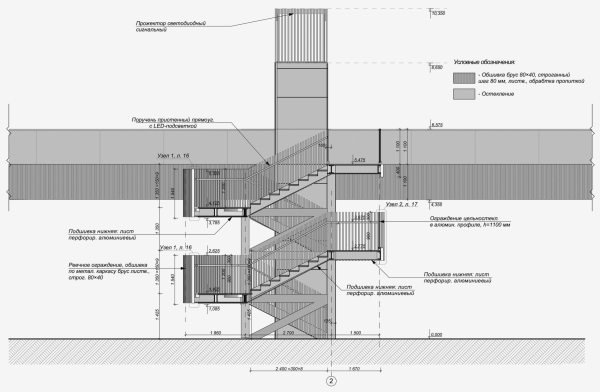 The pedestrian bridge in the Bor Volga ValleyCopyright: © GORA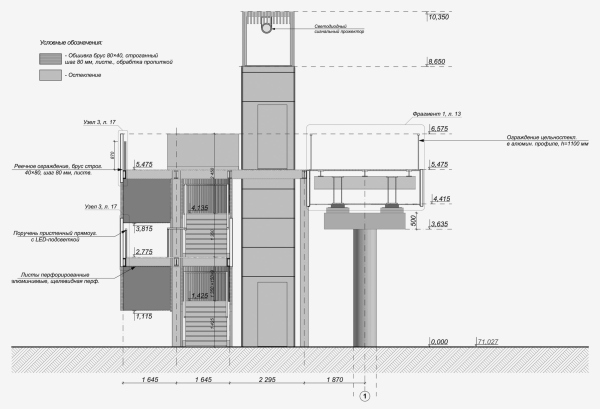 The pedestrian bridge in the Bor Volga ValleyCopyright: © GORA The pedestrian bridge in the Bor Volga ValleyCopyright: © GORA |
|

